A Step from Vulnerability to Resilience: Restoring the Landscape Water-Storage Capacity of the Great Hungarian Plain—An Assessment and a Proposal
Abstract
1. Introduction
2. A Floodplain of Extremely Low Relief
3. Geodynamic Setting
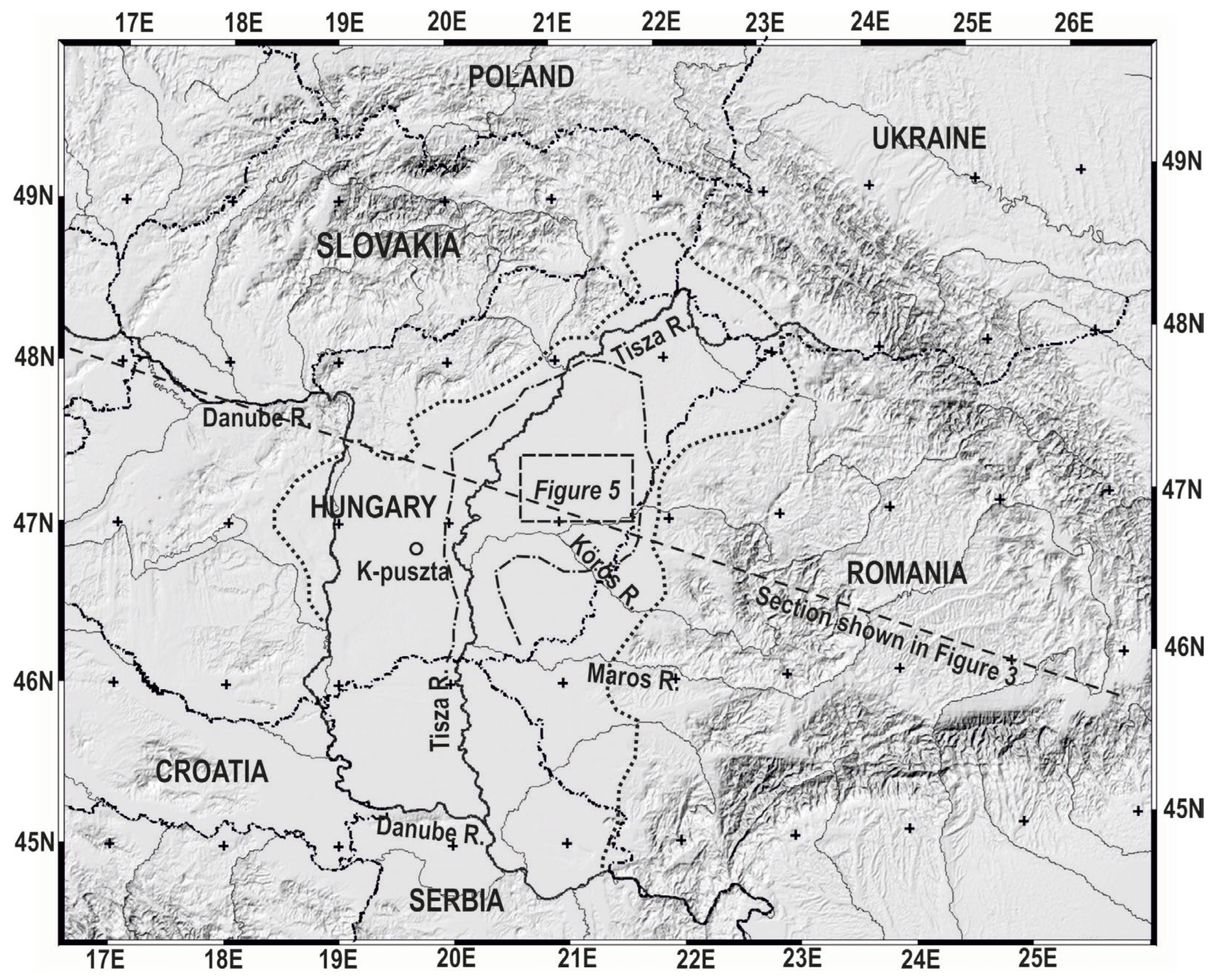

4. Low-Relief Land Use and Water Control Measures
5. Regulation of the Tisza River
- To rearrange the developed meandering river network and to improve the discharge of floods by straightening the channel of the Tisza and partly that of its tributaries;
- To deflood and bring into agricultural production the 20,000 km2 of land by building a system of embankments along the river;
- To make the rivers navigable, which allowed the resulting surplus in agricultural products to be transported.
6. The Consequences of River Regulation
7. Changes in Soil Structure Due to Industrialized Agriculture
8. Drought of 2022 in Eastern Hungary
9. Discussion: A Corrective Option and a Proposal
- To increase the water-retention and water-storage capacity of the soil;
- To use the surplus water stored; in this way, the elongated transpiration of water by vegetation will provide sufficient near-soil moisture during summer.
- The lowest-lying areas in a given region (e.g., the administrative area of a municipality);
- The areas with the lowest production value (according to the Hungarian cadastral system, the lowest value of the “technical gold crown”) in the same area;
- The areas whose owners are willing to sell or lease them to the coordinating state agency;
- The areas whose size is greater than a minimum value (to be defined) or, if not, equal to the minimum value together with the neighboring or nearby areas which may be included in this system.
10. Conclusions
- Abandoning arable farming in areas that were regularly or intermittently inundated prior to the water control works.
- In these areas, political and financial regulators should designate landscape mosaic fragments where the primary objective is to increase soil water-retention capacity, autumn–winter–spring water storage and summer evaporation of stored water.
- The temporary planting of suitable vegetation (e.g., oil radish; Raphanus sativus var. oleiferus) should be used to reduce the secondary impermeable layer compacted through the use of heavy agricultural machinery. This should again increase the water-retention capacity of the upper part of the regolith (Figure 6).
- In the low-lying parts of the selected mosaic fragments, marsh vegetation should be used to promote local summer evaporation in the lower parts and meadow and pasture land use in the more elevated parts.
- These areas need to be supplied with additional water from rivers, typically in autumn and early spring or during possible extreme flood events. To achieve this, it is proposed to upgrade existing excess water drainage channels, reversing their flow direction. As the length of the high-water periods of the feeding rivers is much reduced, the construction of one dam on the Tisza and another on the Berettyó to partially return the water to its original course should be considered in addition to the existing dams.
11. Further Directions
Author Contributions
Funding
Data Availability Statement
Acknowledgments
Conflicts of Interest
References
- Toreti, A.; Bavera, D.; Acosta Navarro, J.; Cammalleri, C.; de Jager, A.; Di Ciollo, C.; Hrast Essenfelder, A.; Maetens, W.; Magni, D.; Masante, D.; et al. Drought in Europe August 2022; Publications Office of the European Union: Luxembourg, 2022. [Google Scholar] [CrossRef]
- Horváth, Á.; Breuer, H. A víz körforgalma a légkörben és a 2022-es rendkívüli aszály meteorológiai háttere. Légkör 2023, 68, 2–8. [Google Scholar] [CrossRef]
- Szentes, O. Szárazság Magyarországon 2022-ben és a múltban. Légkör 2023, 68, 9–19. [Google Scholar] [CrossRef]
- Cholnoky, J. Az Alföld felszíne. Földrajzi Közlemények 1910, 38, 413–436. [Google Scholar]
- Lászlóffy, W. A Tisza-völgy. Vízügyi Közlemények 1932, 14, 108–142. [Google Scholar]
- Timár, G.; Rácz, T. The effects of neotectonic and hydrological processes on the flood hazard of the Tisza region (East Hungary). In Neotectonics and Seismicity of the Pannonian Basin and Surrounding Orogens—A Memoir on the Pannonian Basin; Cloetingh, S., Horváth, F., Bada, G., Lankreijer, A., Eds.; EGU Stephan Mueller Special Publication Series; European Geosciences Union: Göttingen, Germany, 2002; Volume 3, pp. 267–275. [Google Scholar]
- Vandenberghe, J. Timescales, climate and river development. Quat. Sci. Rev. 2005, 14, 631–638. [Google Scholar] [CrossRef]
- Cloetingh, S.; Maţenco, L.; Bada, G.; Dinu, C.; Mocanu, V. The evolution of the Carpathians–Pannonian system: Interaction between neotectonics, deep structure, polyphase orogeny and sedimentary basins in a source to sink natural laboratory. Tectonophysics 2005, 410, 1–14. [Google Scholar] [CrossRef]
- Piller, W.E.; Harzhauser, M.; Oleg Mandic, O. Miocene Central Paratethys stratigraphy–current status and future directions. Stratigraphy 2007, 4, 151–168. [Google Scholar] [CrossRef]
- Kuhlemann, J.; Frisch, W.; Székely, B.; Dunkl, I.; Kázmér, M. Post-collisional sediment budget history of the Alps: Tectonic versus climatic control. Int. J. Earth Sci. Geol. Rundsch. 2002, 91, 818–837. [Google Scholar] [CrossRef]
- Bottyán, E.; Czuppon, G.; Weidinger, T.; Haszpra, L.; Kármán, K. Moisture source diagnostics and isotope characteristics for precipitation in east Hungary: Implications for their relationship. Hydrol. Sci. J. 2017, 62, 2049–2060. [Google Scholar] [CrossRef]
- Kázmér, M. Birth, life and death of the Pannonian Lake. Palaeogeogr. Palaeoclimatol. Palaeoecol. 1990, 79, 171–188. [Google Scholar] [CrossRef]
- Uhrin, A.; Sztanó, O. Reconstruction of Pliocene fluvial channels feeding Lake Pannon (Gödöllő Hills, Hungary). Geol. Carpathica 2007, 58, 291–300. [Google Scholar]
- Uhrin, A.; Sztanó, O. Water-level changes and their effect on deepwater sand accumulation in a lacustrine system: A case study from the Late Miocene of western Pannonian Basin, Hungary. Int. J. Earth Sci. 2012, 101, 1427–1440. [Google Scholar] [CrossRef]
- Horváth, F.; Musitz, B.; Balázs, A.; Végh, A.; Uhrin, A.; Nádor, A.; Koroknai, B.; Pap, N.; Tóth, T.; Wórum, G. Evolution of the Pannonian basin and its geothermal resources. Geothermics 2015, 53, 328–352. [Google Scholar] [CrossRef]
- Kuhlemann, J. Post-collisional sediment budget of circum-Alpine basins (Central Europe). Mem. Sci. Geol. Padova 2000, 52, 1–91. [Google Scholar]
- Szádeczky-Kardoss, E. Geologie der rumpfungarländischen Kleinen Tiefebene. In Mitteilungen der Berg- und Hüttenmännischen Abteilung an der kgl. ung; Palatin-Joseph-Universität für Technische und Wirtschaftwissenschaften: Sopron, Hungary, 1938; Volume 10, pp. 1–442. [Google Scholar]
- Gábris, G.; Nádor, A. Long-term fluvial archives in Hungary: Response of the Danube and Tisza rivers to tectonic movements and climatic changes during the Quaternary: A review and new synthesis. Quat. Sci. Rev. 2007, 26, 2758–2782. [Google Scholar] [CrossRef]
- Thamó-Bozsó, E.; Murray, A.S.; Nádor, A.; Magyari, Á.; Babinszki, E. Investigation of river network evolution using luminescence dating and heavy mineral analysis of Late-Quaternary fluvial sands from the Great Hungarian Plain. Quat. Geochronol. 2007, 2, 168–173. [Google Scholar] [CrossRef]
- Timár, G.; Sümegi, P.; Horváth, F. Late Quaternary dynamics of the Tisza River: Evidence of climatic and tectonic controls. Tectonophysics 2005, 410, 97–110. [Google Scholar] [CrossRef]
- Székely, B. Rediscovering the old treasures of cartography—What an almost 500-year-old map can tell to a geoscientist. Acta Geod. Geophys. Hung. 2008, 44, 3–16. [Google Scholar] [CrossRef]
- Timár, G.; Székely, B.; Molnár, G.; Ferencz, C.; Kern, A.; Galambos, C.; Gercsák, G.; Zentai, L. Combination of historical maps and satellite images of the Banat region—Re-appearance of an old wetland area. Glob. Planet. Change 2008, 62, 29–38. [Google Scholar] [CrossRef]
- Károlyi, Z. A Tisza Mederváltozásai, Különös Tekintettel az Árvízvédelemre; VITUKI: Budapest, Hungary, 1960; 102p. [Google Scholar]
- Ortvay, T. Magyarország Régi Vízrajza a XIII-ik Század Végéig; Magyar Tudományos Akadémia Könyvkiadó-Hivatala: Budapest, Hungary, 1882; Volume 1, 544p. [Google Scholar]
- Andrásfalvy, B. A Duna Mente Népének Ártéri Gazdálkodása: Ártéri Gazdálkodás Tolna és Baranya Megyében az Ármentesítési Munkák Befejezése Előtt; Ekvilibrium: Budapest, Hungary, 2007; 440p. [Google Scholar]
- Bellon, T. Ártéri gazdálkodás az Alföldön az ármenetesítések előtt. In A Kárpát-Medence Történeti Földrajza; Frisnyák, S., Ed.; Magyar Tudományos Akadémia: Nyíregyháza, Hungary, 1996; pp. 311–321. [Google Scholar]
- Bellon, T. A Tisza Néprajza—Ártéri Gazdálkodás a Tiszai Alföldön; Timp Kiadó: Budapest, Hungary, 2003; 230p. [Google Scholar]
- Pinke, Z. Modernization and decline: An eco-historical perspective on regulation of the Tisza Valley, Hungary. J. Hist. Geogr. 2014, 45, 92–105. [Google Scholar] [CrossRef]
- Pinke, Z.; Kiss, M.; Lövei, G. Developing an integrated land use planning system on reclaimed wetlands of the Hungarian Plain using economic valuation of ecosystem services. Ecosyst. Serv. 2018, 30B, 299–308. [Google Scholar] [CrossRef]
- Babinszki, E. Térképek a múltból: A pocsolyatérkép. Élet és Tudomány 2017, 72, 911–913. [Google Scholar]
- Rácz, L. A Kárpát-medence éghajlattörténete a kora újkorban idején (1490–1800). A környezettörténeti források feldolgozásának módszerei. Történelmi Szle. 1995, 4, 487–508. [Google Scholar]
- Paleocapa, P. Parere Sulla Regolazione del Tibisco; Trattner-Károlyi: Pest, Hungary, 1846; 133p. [Google Scholar]
- Lászlóffy, W. A Tisza—Vízi Munkálatok és Vízgazdálkodás a Tiszai Vízrendszerben; Akadémiai Kiadó: Budapest, Hungary, 1982; 610p. [Google Scholar]
- Bogdánfy, Ö. A középtiszai nyílt árterek és gátszakadások hatása az árvíz magasságára. Vízügyi Közlemények 1916, 6, 163–170. [Google Scholar]
- Szlávik, L. Magyarország árvízvédelmének stratégiai kérdései. Vízügyi Közlemények 2000, 82, 553–594. [Google Scholar]
- Károlyi, Z. A szegedi árvíz, 1879. Vízügyi Történeti Füzetek 1969, 1, 1–80. [Google Scholar]
- Criss, R.E.; Shock, E.L. Flood enhancement through flood control. Geology 1998, 29, 875–878. [Google Scholar] [CrossRef]
- Bartha, D. Az Alföld jelenkori vegetációjának kialakulása. Hidrológiai Közlöny 1993, 73, 17–19. [Google Scholar]
- Mezősi, G. Magyarország Természetföldrajza; Akadémiai Kiadó: Budapest, Hungary, 2011; 393p. [Google Scholar]
- Timár, G. Possible Projection of the First Military Survey of the Habsburg Empire in Lower Austria and Hungary (Late 18th Century)—An Improvement in Fitting Historical Topographic Maps to Modern Cartographic Systems. ISPRS Int. J. Geo-Inf. 2023, 12, 220. [Google Scholar] [CrossRef]
- EEA SDI. CORINE Land Cover 2018 (Raster 100 m), Europe, 6-Yearly—Version 2020_20u1, May 2020. Available online: https://doi.org/10.2909/960998c1-1870-4e82-8051-6485205ebbac (accessed on 15 November 2023).
- Somogyi, S. Az ármentesítések és folyószabályozások (vázlatos) földrajzi hatásai hazánkban. Földrajzi Közlemények 1967, 91, 145–158. [Google Scholar]
- Schweitzer, F. A magyarországi folyószabályozások geomorfológiai vonatkozásai—Folyóink hullámterének fejlődése, kapcsolatuk az árvizekkel és az árvízvédelmi töltésekkel. Földrajzi Értesítő 2001, 50, 63–72. [Google Scholar]
- Kvassay, J. A Csekély Esésű Folyók Szabályozásának Alapelvei, Különös Tekintettel a Tiszára; Magyar Mérnök és Építész Egylet kiadása: Budapest, Hungary, 1889; 116p. [Google Scholar]
- Nagy, I.; Schweitzer, F.; Alföldy, L. A hullámtéri hordaléklerakódás (övzátony). Vízügyi Közlemények 2001, 83, 539–564. [Google Scholar]
- Joó, I. Recent vertical surface movements in the Carpathian Basin. Tectonophysics 1992, 202, 129–134. [Google Scholar] [CrossRef]
- Timár, G.; Gábris, G. Estimation of the water conducting capacity of the natural flood conducting channels of the Tisza floodplain, the Great Hungarian Plain. Geomorphology 2008, 98, 250–261. [Google Scholar] [CrossRef]
- Zech, W.; Schad, P.; Hintermaier-Erhard, G. Soils of the World; Springer: Berlin/Heidelberg, Germany, 2022; Volume 256, pp. 150–155. [Google Scholar]
- Pagliai, M.; Vignozzi, N.; Pellegrini, S. Soil structure and the effect of management practices. Soil Tillage Res. 2004, 79, 131–143. [Google Scholar] [CrossRef]
- Nawaz, M.F.; Bourrié, G.; Trolard, F. Soil compaction impact and modelling. A review. Agron. Sustain. Dev. 2013, 33, 291–303. [Google Scholar] [CrossRef]
- Jakab, G.; Németh, T.; Csepinszky, B.; Madarász, B.; Szalai, Z.; Kertész, Á. The influence of short term sealing and crusting on hydrology and erosion at Balaton Uplands, Hungary. Carpathian J. Earth Environ. Sci. 2013, 8, 147–155. [Google Scholar]
- Jakab, G.; Madarász, B.; Szabó, J.A.; Tóth, A.; Zacháry, D.; Szalai, Z.; Kertész, Á.; Dyson, J. Infiltration and soil loss changes during the growing season under ploughing and conservation tillage. Sustainability 2017, 9, 1726. [Google Scholar] [CrossRef]
- Morrison, C.G.T. The formation of pans in soil. Trans. Faraday Soc. 1922, 17, 321–324. [Google Scholar] [CrossRef]
- Huzsvai, L.; Rátonyi, T.; Nagy, J.; Megyes, A. A talajkímélő művelés hatása a talaj fizikai tulajdonságaira és a szervesanyag-körforgalmára. Acta Agrar. Debreceniensis 2003, 12, 42–45. [Google Scholar] [CrossRef] [PubMed]
- Dekemati, I.; Simon, B.; Vinogradov, S.; Birkás, M. The effects of various tillage treatments on soil physical properties, earthworm abundance and crop yield in Hungary. Soil Tillage Res. 2019, 194, 104334. [Google Scholar] [CrossRef]
- Liu, Z.; Cao, S.; Sun, Z.; Wang, H.; Qu, S.; Lei, N.; He, J.; Dong, Q. Tillage effects on soil properties and crop yield after land reclamation. Sci. Rep. 2021, 11, 4611. [Google Scholar] [CrossRef]
- Shaheb, M.R.; Venkatesh, R.; Shearer, S.A. A Review on the Effect of Soil Compaction and its Management for Sustainable Crop Production. J. Biosyst. Eng. 2021, 46, 417–439. [Google Scholar] [CrossRef]
- Shah, A.N.; Tanveer, M.; Shahzad, B.; Yang, G.; Fahad, S.; Ali, S.; Bukhari, M.A.; Tung, S.A.; Hafeez, A.; Souilyanonh, B. Soil compaction effects on soil health and crop productivity: An overview. Environ. Sci. Pollut. Res. 2017, 24, 10056–10067. [Google Scholar] [CrossRef] [PubMed]
- Islam, M.S. Cultivation and Drought Management in Agriculture: Climate Change Adaptation; Springer Nature: Cham, Switzerland, 2022; 217p. [Google Scholar] [CrossRef]
- Szalai, Z.; Szabó, J.; Kovács, J.; Mészáros, E.; Albert, G.; Centeri, C.; Szabó, B.; Madarász, B.; Zacháry, D.; Jakab, G. Redistribution of soil organic carbon triggered by erosion at field scale under subhumid climate, Hungary. Pedosphere 2016, 26, 652–665. [Google Scholar] [CrossRef]
- Tripathy, K.P.; Mishra, A.K. How Unusual Is the 2022 European Compound Drought and Heatwave Event? Geophys. Res. Lett. 2023, 10, e2023GL105453. [Google Scholar] [CrossRef]
- Faranda, D.; Pascale, S.; Bulut, B. Persistent anticyclonic conditions and climate change exacerbated the exceptional 2022 European-Mediterranean drought. Environ. Res. Lett. 2023, 18, 034030. [Google Scholar] [CrossRef]
- Oven, J. A study of thunderstorm formation along dry lines. J. Appl. Meteorol. Climatol. 1966, 5, 58–63. [Google Scholar] [CrossRef][Green Version]
- Weckwerth, T.M. The effect of small-scale moisture variability on thunderstorm initiation. Mon. Weather. Rev. 2000, 128, 4017–4030. [Google Scholar] [CrossRef]
- Pinke, Z.; Decsi, B.; Kozma, Z.; Vári, Á.; Lövei, G. A spatially explicit analysis of wheat and maize yield sensitivity to changing groundwater levels in Hungary, 1961–2010. Sci. Total Environ. 2020, 715, 136555. [Google Scholar] [CrossRef]
- Czibolya, L.; Makra, L.; Pinke, Z.; Horvath, J.; Csepe, Z. Dependence of the Crop Yields of Maize, Wheat, Barley and Rye on Temperature and Precipitation in Hungary. Carpathian J. Earth Environ. Sci. 2020, 15, 359–368. [Google Scholar] [CrossRef]
- Erdődiné Molnár, Z.; Kovács, A.V. A 2022-es aszály agrometeorológiai elemzése. Légkör 2023, 1, 20–27. [Google Scholar] [CrossRef]
- Houghton, H.G. An Appraisal of Cloud Seeding as a Means of Increasing Precipitation. Bull. Am. Meteorol. Soc. 1951, 23, 39–46. [Google Scholar] [CrossRef][Green Version]
- Dennis, A.S. Weather Modification by Cloud Seeding; International Geophysics Series; Academic Press: New York, NY, USA; London, UK; Toronto, ON, Canada; Sydney, Australia; San Francisco, CA, USA, 1980; Volume 24, 267p. [Google Scholar]
- Cobb, A.R.; Dommain, R.; Tan, F.; Heng, N.H.E.; Harvey, C.F. Carbon storage capacity of tropical peatlands in natural and artificial drainage networks. Environ. Res. Lett. 2020, 15, 114009. [Google Scholar] [CrossRef]
- Liu, H.; Rezanezhad, F.; Lennartz, B. Impact of land management on available water capacity and water storage of peatlands. Geoderma 2022, 406, 115521. [Google Scholar] [CrossRef]
- Price, J.S.; Schlotzhauer, S.M. Importance of shrinkage and compression in determining water storage changes in peat: The case of a mined peatland. Hydrol. Process. 1999, 13, 2591–2601. [Google Scholar] [CrossRef]
- Stachowicz, M.; Manton, M.; Abramchuk, M.; Banaszuk, P.; Jarašius, L.; Kamocki, A.; Povilaitis, A.; Samerkhanova, A.; Schäfer, A.; Sendžikaité, J.; et al. To store or to drain—To lose or to gain? Rewetting drained peatlands as a measure for increasing water storage in the transboundary Neman River Basin. Sci. Total Environ. 2022, 829, 154560. [Google Scholar] [CrossRef] [PubMed]
- Valois, R.; Schaffer, N.; Figueroa, R.; Maldonado, A.; Yáñez, E.; Hevia, A.; Carrizo, G.Y.; MacDonell, S. Characterizing the water storage capacity and hydrological role of mountain peatlands in the arid Andes of north-central Chile. Water 2020, 12, 1071. [Google Scholar] [CrossRef]
- Dömsödi, J. Lápképződés, Lápmegsemmisülés: A Természet-és Gazdaságföldrajzi Változatok Szerepe a Tőzeglápok Hasznosításában; MTA Földrajztudományi Kutató Intézet: Budapest, Hungary, 1988; 120p. [Google Scholar]
- Dömsödi, J. Lápi eredetű Szervesanyag-Tartalékaink Mezőgazdasági Hasznosítása; Mezőgazdasági Kiadó: Budapest, Hungary, 1977; 125p. [Google Scholar]
- Czauner, B.; Erőss, A.; Szkolnikovics-Simon, S.; Markó, Á.; Baják, P.; Trásy-Havril, T.; Szijártó, M.; Szabó, Z.; Hegedűs-Csondor, K.; Mádl-Szőnyi, J. From basin-scale groundwater flow to integrated geofluid research in the hydrogeology research group of Eötvös Loránd University, Hungary. J. Hydrol. X 2022, 17, 100142. [Google Scholar] [CrossRef]
- Szabó, Z.; Szijártó, M.; Tóth, Á.; Mádl-Szőnyi, J. The Significance of Groundwater Table Inclination for Nature-Based Replenishment of Groundwater-Dependent Ecosystems by Managed Aquifer Recharge. Water 2023, 15, 1077. [Google Scholar] [CrossRef]

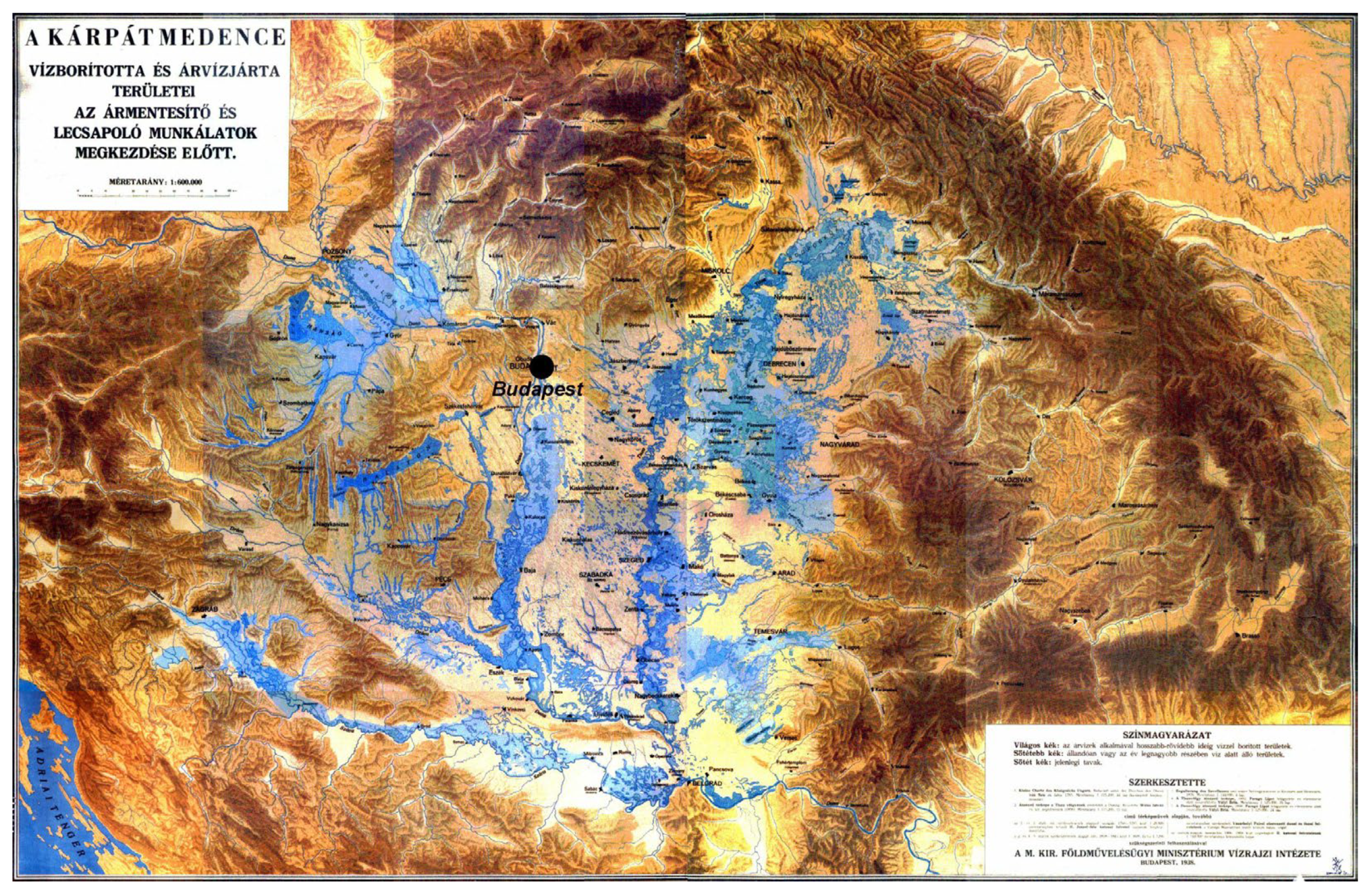
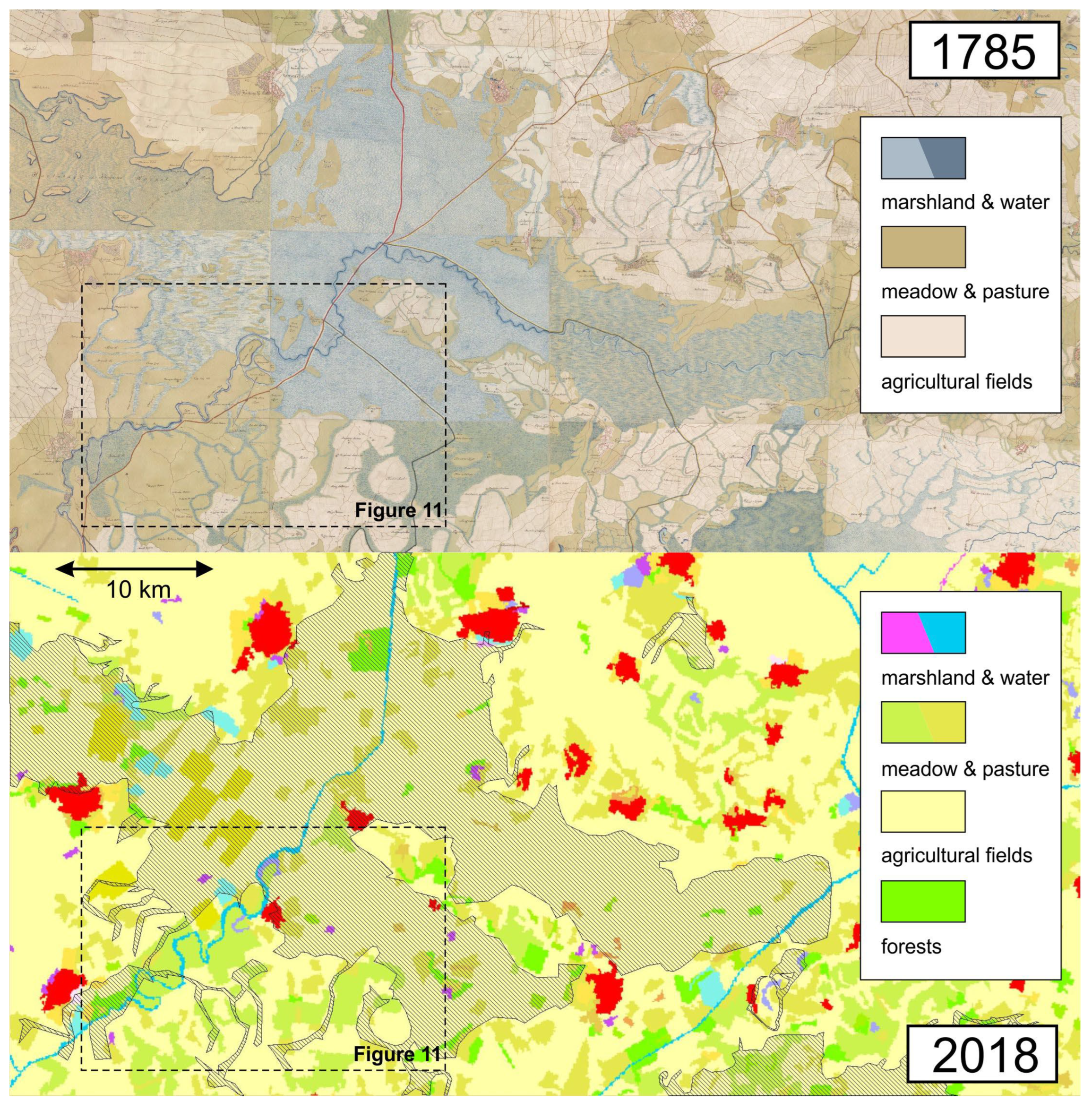
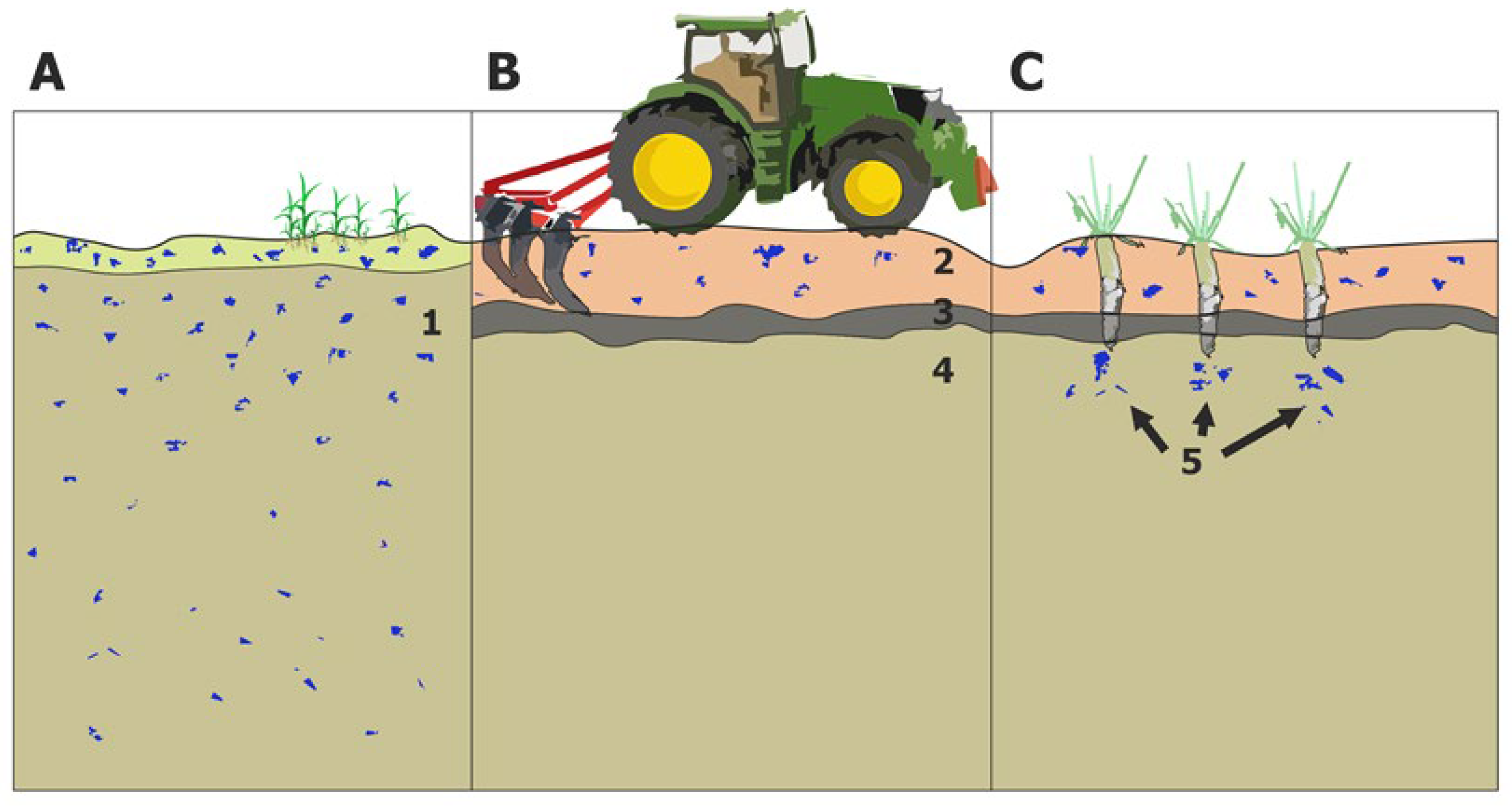

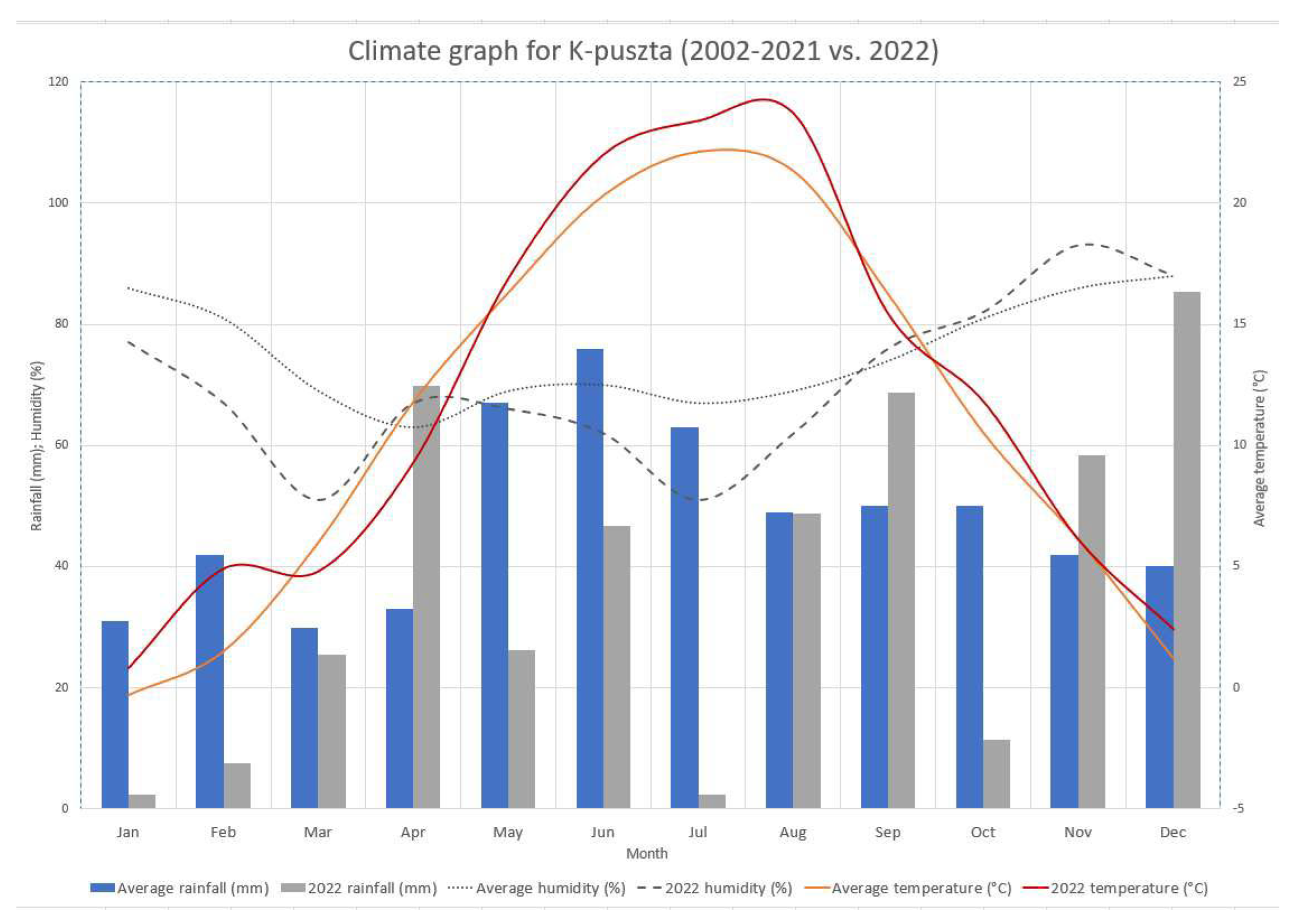
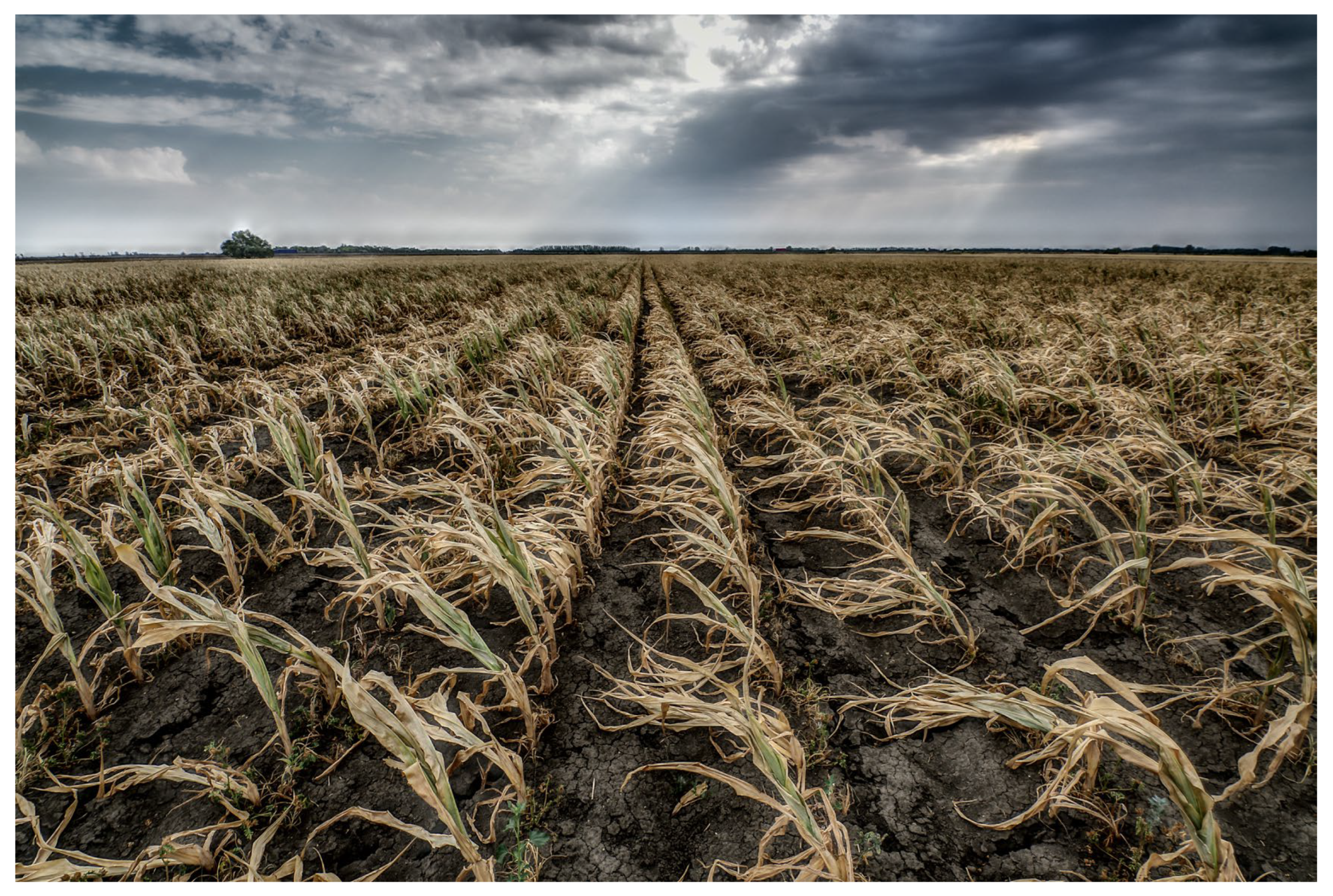
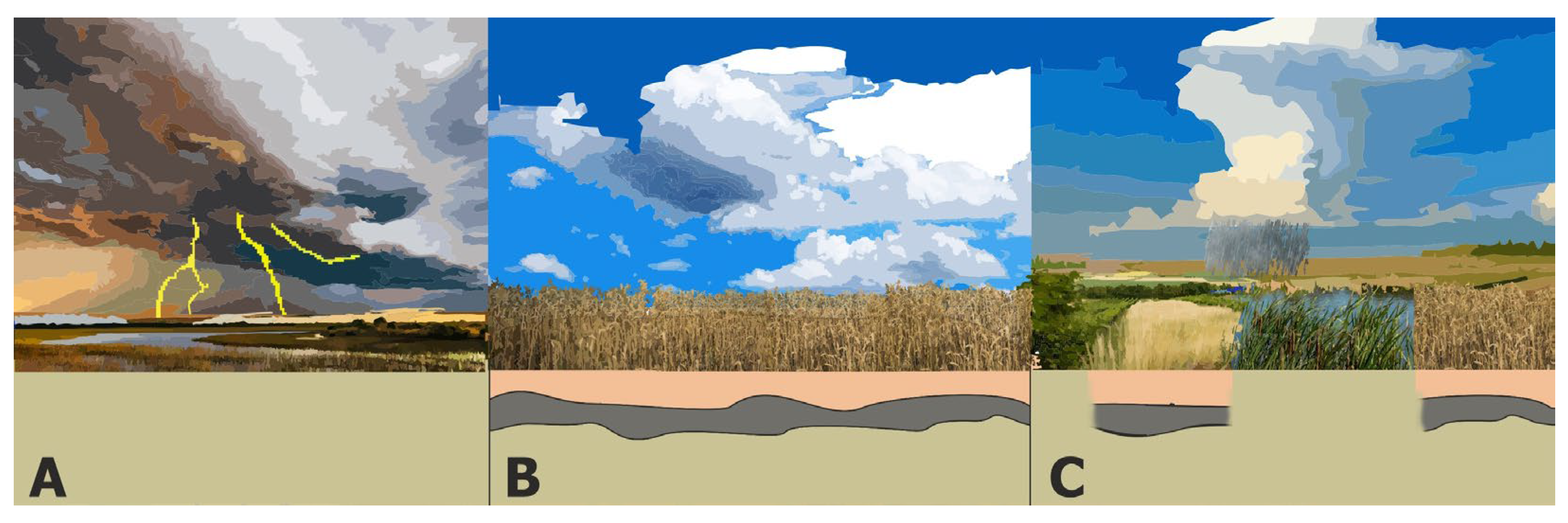
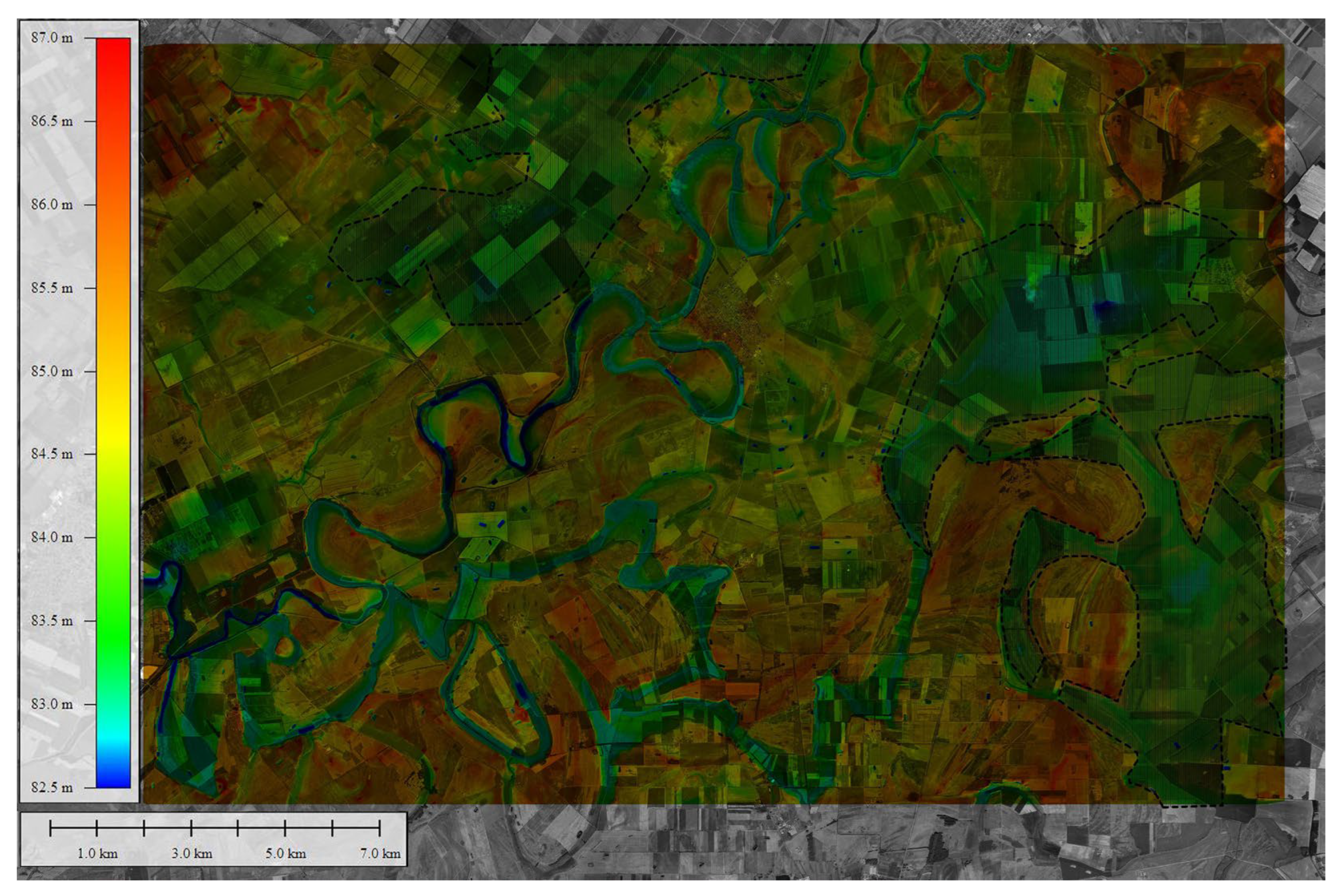
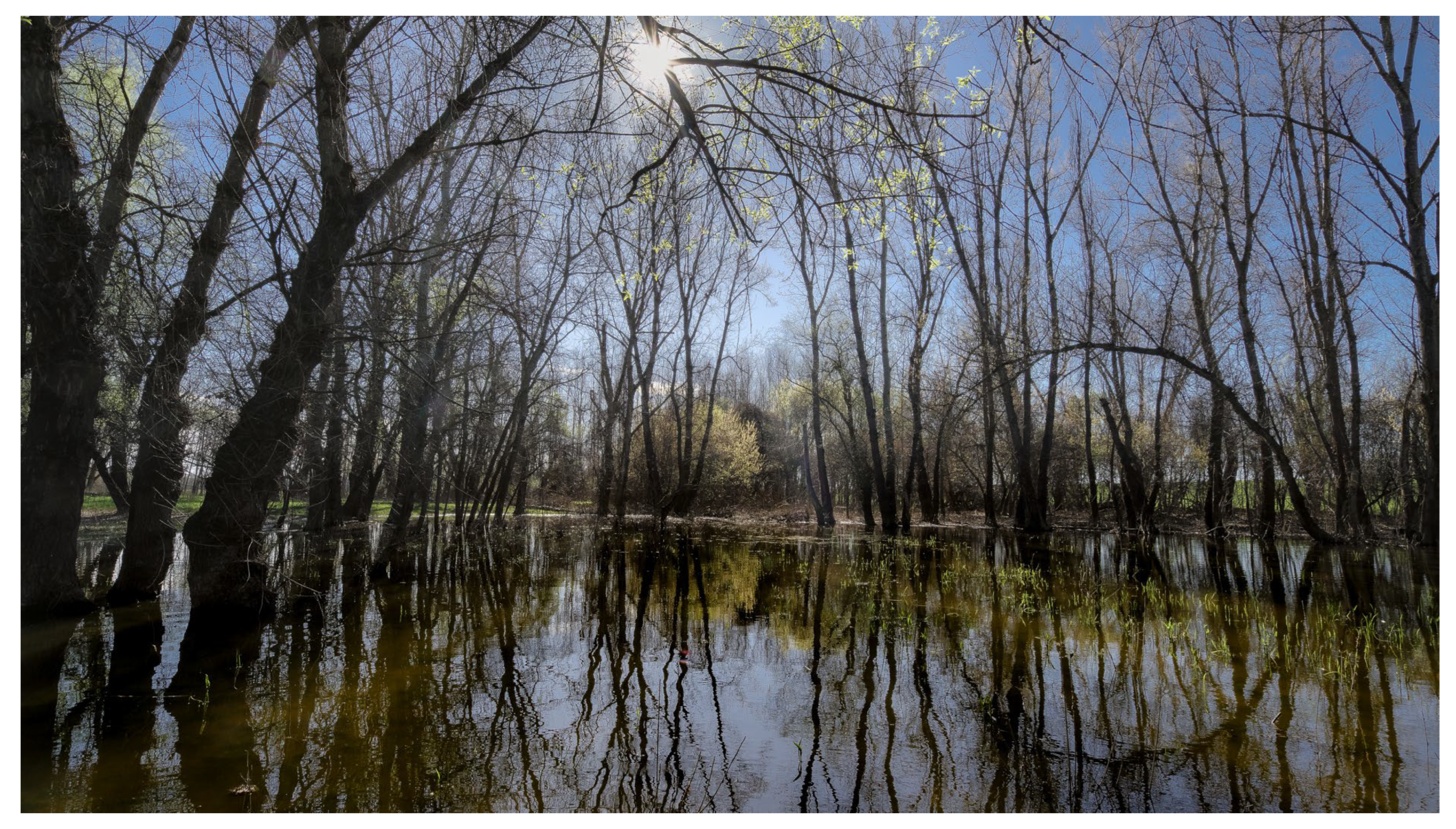
Disclaimer/Publisher’s Note: The statements, opinions and data contained in all publications are solely those of the individual author(s) and contributor(s) and not of MDPI and/or the editor(s). MDPI and/or the editor(s) disclaim responsibility for any injury to people or property resulting from any ideas, methods, instructions or products referred to in the content. |
© 2024 by the authors. Licensee MDPI, Basel, Switzerland. This article is an open access article distributed under the terms and conditions of the Creative Commons Attribution (CC BY) license (https://creativecommons.org/licenses/by/4.0/).
Share and Cite
Timár, G.; Jakab, G.; Székely, B. A Step from Vulnerability to Resilience: Restoring the Landscape Water-Storage Capacity of the Great Hungarian Plain—An Assessment and a Proposal. Land 2024, 13, 146. https://doi.org/10.3390/land13020146
Timár G, Jakab G, Székely B. A Step from Vulnerability to Resilience: Restoring the Landscape Water-Storage Capacity of the Great Hungarian Plain—An Assessment and a Proposal. Land. 2024; 13(2):146. https://doi.org/10.3390/land13020146
Chicago/Turabian StyleTimár, Gábor, Gusztáv Jakab, and Balázs Székely. 2024. "A Step from Vulnerability to Resilience: Restoring the Landscape Water-Storage Capacity of the Great Hungarian Plain—An Assessment and a Proposal" Land 13, no. 2: 146. https://doi.org/10.3390/land13020146
APA StyleTimár, G., Jakab, G., & Székely, B. (2024). A Step from Vulnerability to Resilience: Restoring the Landscape Water-Storage Capacity of the Great Hungarian Plain—An Assessment and a Proposal. Land, 13(2), 146. https://doi.org/10.3390/land13020146








